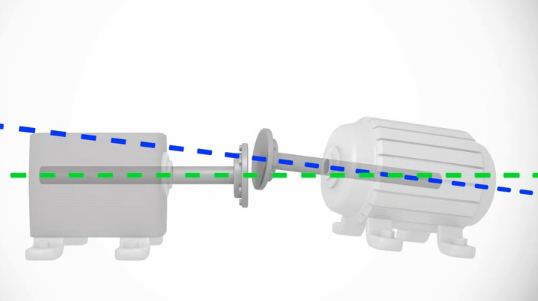No, it is not the place where good shaft alignments get lost – never to be seen again! It is a way of thinking about locating machinery feet so that the shafts are in alignment, even when the feet of the moveable machine may be a few thousandths up, down, left, or right of perfect. Shaft alignment is about aligning the shafts, not the feet.
Think of the shafts as two straight lines – one stationary, representing the stationary machine, and one moveable, representing the moveable machine.
Examine the three graphs below:
In the top graph, the moveable rear feet are 10 mils low, and the moveable front feet are 5 mils high, but the result at the coupling is 8 mils high.
In the middle graph, the moveable rear feet are 5 mils low, and the moveable front feet are 10 mils low, but the result at the coupling is 12 mils low.
In the bottom graph, the moveable rear feet are 10 mils high, and the moveable front feet are 5 mils high. The result at the coupling is 3 mils high.

Simply put, the “triangle” formed by connecting the foot positions to the reference line should point toward the coupling, not away from it. Remember this simple rule of thumb;
- The value of the moveable rear feet (outboard) should be bigger.
- The value of the moveable front feet (inboard) should be smaller.
- They should both be the same sign. In other words, if one is a positive value, both should be a positive value. If one is a negative value, both should be a negative value.
For a better explanation, please read the article Don’t Look at Your Feet by VibrAlign’s founder and CEO, David Zdrojewski. Click on the link below.




4 Comments
I try to look at it as splitting the difference.
Well put Stan.
[…] For more information, see VibrAlign’s blog post on this topic at http://thealignmentblog.com/blog/2013/12/18/alignment-triangle-3/ […]
[…] For more information, see VibrAlign’s blog post on this topic athttp://thealignmentblog.com/blog/2013/12/18/alignment-triangle-3/ […]